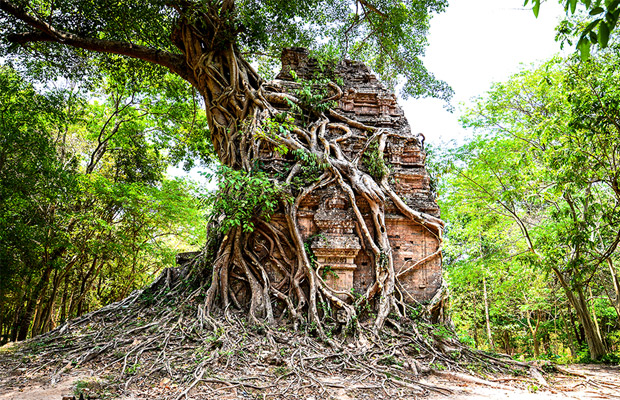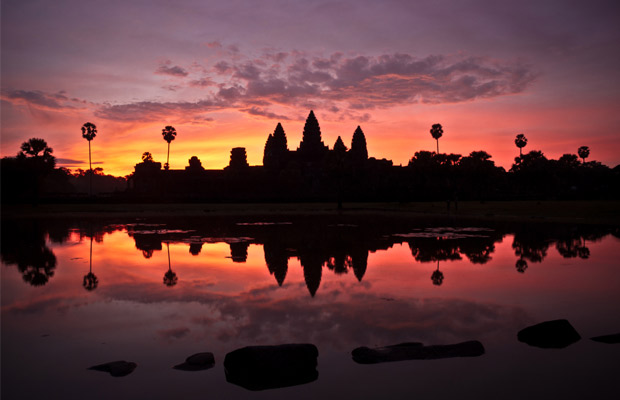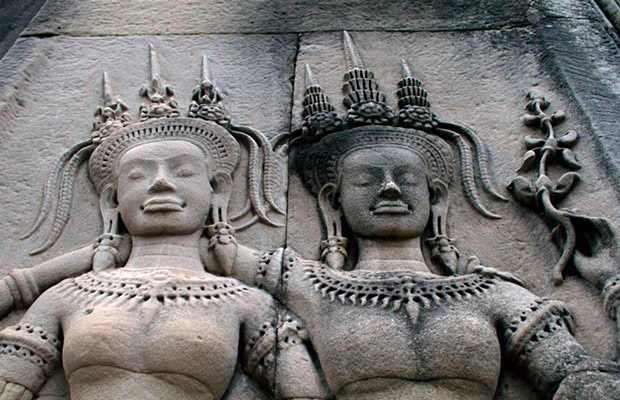Angkor Thom North Gate
Out of 5 gates giving access to the royal Khmer city of Angkor Thom, only two are heavily trafficked. Being on the Petit Circuit through the Angkor Archaeological Park, the South Gate (the busiest because it is also part of the Grand Circuit) and Victory Gate, people go through them often. Since Angkor Thom North Gate is on the Grand Circuit and off the itinerary the vast majority of visitors to Angkor are restricted, it is a much quieter gate than the other two.
Out of 5 gates giving access to the royal Khmer city of Angkor Thom, only two are heavily trafficked. Being on the Petit Circuit through the Angkor Archaeological Park, the South Gate (the busiest because it is also part of the Grand Circuit) and Victory Gate, people go through them often. Since Angkor Thom North Gate is on the Grand Circuit and off the itinerary the vast majority of visitors to Angkor are restricted, it is a much quieter gate than the other two.
The square outer wall of Angkor Thom has an entrance gate at the cardinal point, except from the east wall, which has two East Gate and Victory Gate. East Gate, despite being in the middle of the wall and in line with Bayon, sees very little in terms of traffic, because all who cross Angkor Thom simply take the paved road that was put up to pass through the Victory Gate. However, there is still a gated traffic through which it is even more scarce. West Gate is almost totally abandoned and hardly receives visitors. Only the most determined explorers who also decide to visit West Mebon (huge water reservoir west of Angkor Thom) take this all day long diversion (unless you have motorized transport) and have very little to offer.
Needless to say, South and Victory Gates, being the busiest of five, saw more restoration work than the other three gates. North Gate has been restored a bit, but it was one of the gates that was fairly well preserved to begin with. When looting became a lucrative past-time activity for middle Cambodians, many stone giants (Devas on the left and Asuras on the right) that adorn the sides of the sidewalks that span the dry moats in front of each gate were vandalized and their cut heads sold to outside collectors. Many of the giants of the North Gate have also not escaped this fate, leaving this part of the North Gate desperately devastated, but the gate itself remains in good shape.
Nothing else makes the North Gate of Angkor Thom special. It's quieter than South Gate, so if you look for less disturbances from the Cambodian vendors of doom, you can find it here. However, since all the gates of Angkor Thom were built to be identical, your best option for pictures is to stay with the South Gate due to the well-restored Naga that takes Apsaras and Asuras on either side of the sidewalk. South Gate also gets many elephants through it, which also makes quite interesting, yet sad, images. Like all other gates, as well as the towers of Bayon, the North Gate is crowned with the faces of the bodhisattva Avalokiteshvara with the likeness of King Jayavarman VII, who made them build.
View Mores Temple Guide
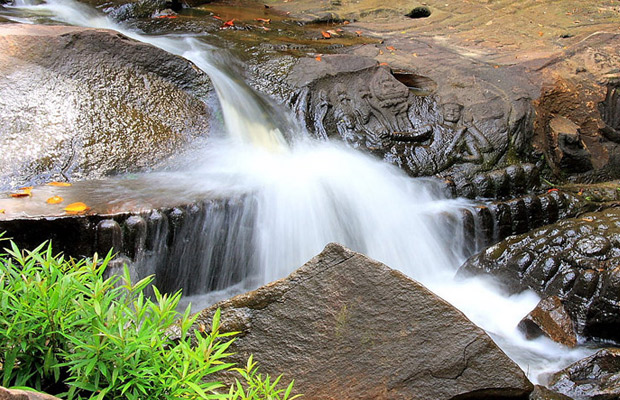
Kbal Spean
Kbal Spean is an archaeological site of the Angkorian era on the southwest slopes of the Kulen Hills, northeast of Angkor, in the Siem Reap district of Siem Reap province, Cambodia. It is situated ...

Preah Vihear Temple
Preah Vihear Temple (Khmer: ប្រាសាទព្រះវិហារ Prasat Preah Vihea) is an ancient Hindu temple built during the period of the Khmer Empire, which sits atop a 525-meter ...

Preah Palilay
Preah Palilay (Khmer: ប្រាសាទព្រះបាលិលេយ្យ [1]) is a temple in Angkor, Cambodia. It is located in Angkor Thom, 400 m north-west of Phimeanakas. This small ...
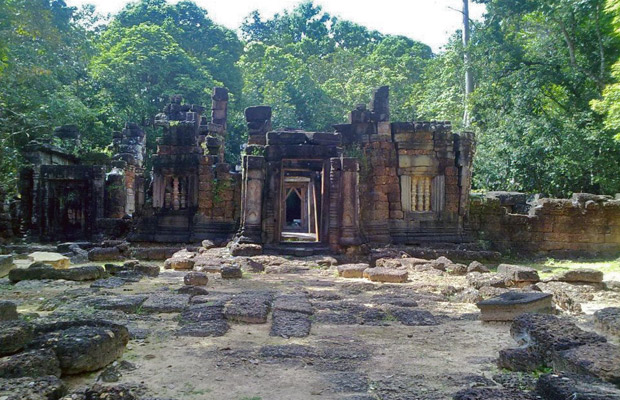
Krol Ko
Krol Ko in Angkor, Cambodia, is a Buddhist temple built in the late 12th century under the rule of Jayavarman VII. It is north of Neak Pean. Krol Ko is a small temple located north of Neak Pean. It ...

Terrace of the Elephants
The Elephant Terrace (Khmer: ព្រះ លានជល់ដំរី) is part of the walled city of Angkor Thom, a ruined temple complex in Cambodia. The terrace was used by Angkor King, ...
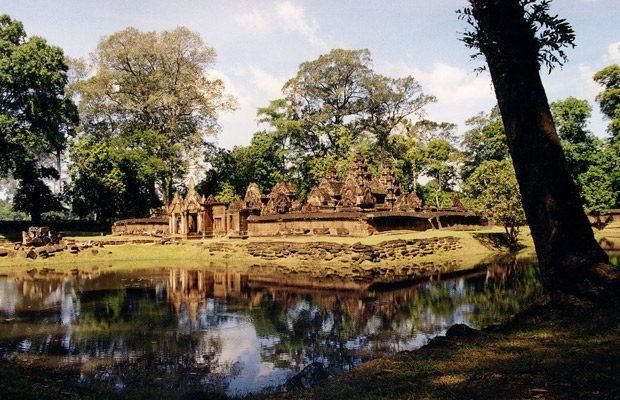
Banteay Srei Tours
The tenth-century temple of Banteay Srei is known for its intricate decoration carved in pinkish sandstone that covers the walls like tapestries. This site guarantees all the time that your schedule ...
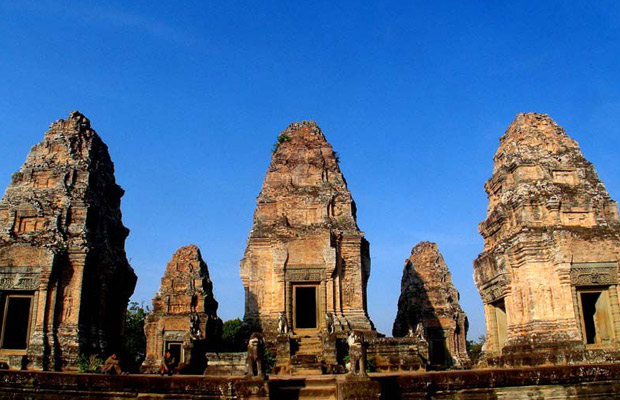
East Mebon
The East Mebon (Khmer: ប្រាសាទមេបុណ្យខាងកើត) is a 10th century temple in Angkor, Cambodia. Built during the reign of King Rajendravarman, stands on what was an ...
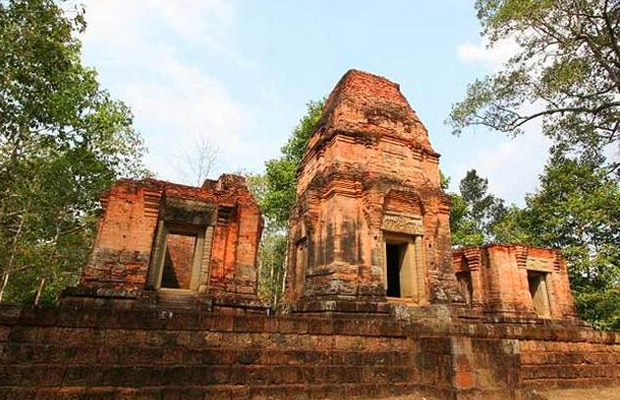
Prasat Bei
Prasat Bei (Khmer: ប្រាសាទបី) means "three temples", is a temple with three brick towers in a north-south row, facing east and standing on a laterite platform. The central tower ...
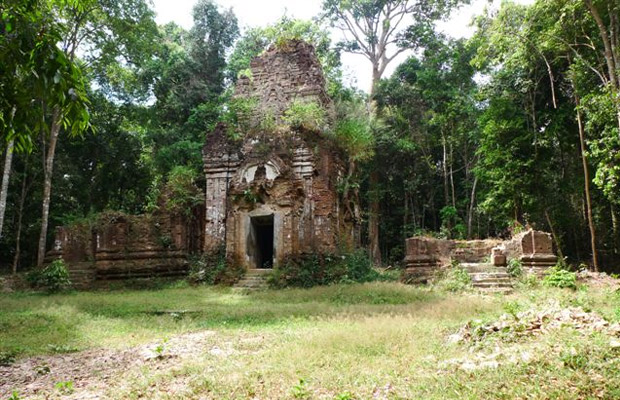
Prasat Damrei Krap
Prasat Damrei Krap is a temple with three towers. The main entrance is the east side. The condition of the central tower is relatively ...
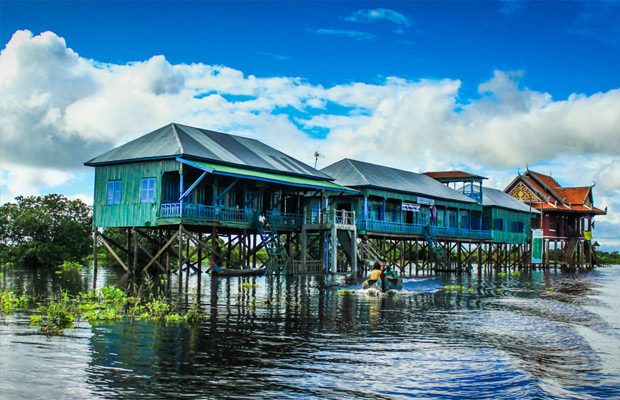
Kampong Phluk floating village
Kampong Phluk is a set of three villages of slaughter houses built within the floodplain about 16 km southeast of Siem Reap. The villages are mainly Khmer and has about 3000 inhabitants among them. ...
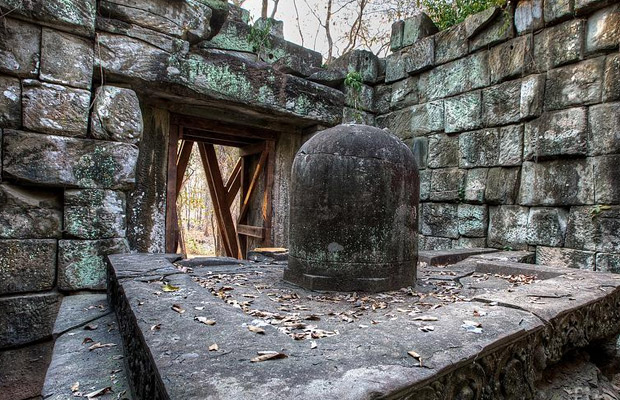
Prasat linga
The nearest monuments to the main temple complex of Koh Ker of Prasat Thom are five isolated temples belonging to the Northeast group. Each of them housed a monolithic decorated Lingam of enormous ...

Neak Pean Temple
Neak Pean (or Neak Poan) [2] (Khmer: ប្រាសាទនាគព័ន្ធ) ("The intertwined serpents") in Angkor, Cambodia is an artificial island with a Buddhist temple on a circular ...




